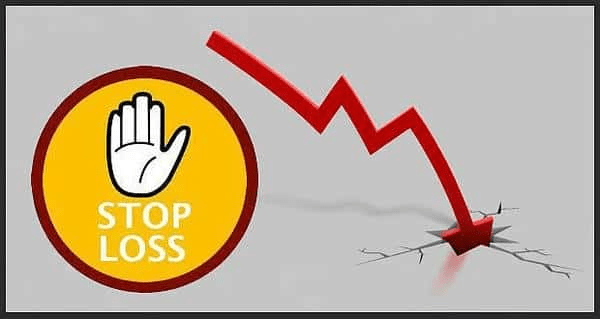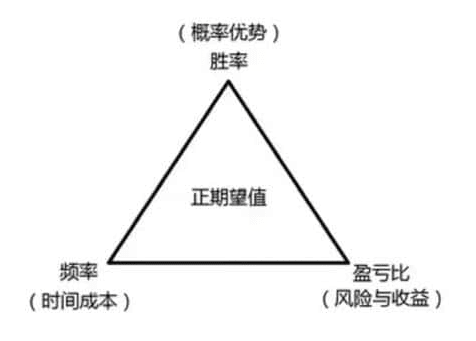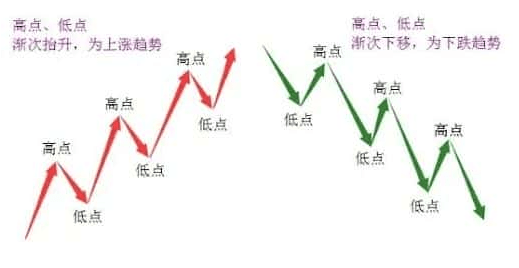
In the crypto trading world, you must be familiar with the term stop-loss. Some people treat it as a 'lifeline,' while others see it as a 'scam'—setting a stop-loss still results in the account being swept by a 'harvester,' leading to constant small losses and dwindling capital.
Today, we are going to talk about an advanced technique: 'probabilistic stop-loss setting'. By combining win rates and risk-reward ratios, we can turn stop-loss from a 'capital killer' into your 'profit amplifier'. Sounds exciting, right? Don't rush; we'll take it step by step, ensuring you understand and can apply it!

Stop-loss: Lifeline or capital harvester? First, let's clarify what stop-loss is. Simply put, it's setting a 'bottom line price' in advance while trading; if the market price falls to this point, the system automatically sells to help you stop the loss. In the crypto world, where prices can multiply several times in a day or drop to zero instantly, stop-loss is practically a lifesaver.
But reality is often harsh. Many people find themselves 'swept out' after setting a stop-loss—the price just touches the stop-loss point and then gets liquidated, only for the market to rebound immediately, making them watch opportunities slip away. Even worse, frequent stop-loss triggers cause small losses to pile up like harvesting chives, leading to a sharp decline in account balance. Clearly intending to preserve capital, how did it turn into a 'capital harvester'?
Where's the problem? The stop-loss is set too rigidly and hasn't connected with the market and strategy! Traditional stop-loss thinking only focuses on 'not losing too much' but forgets the importance of scientific setting. We need to change our mindset and let the stop-loss 'live'.

Win rate and risk-reward ratio: The 'golden partners' of stop-loss. To turn stop-loss into a 'profit amplifier', you need two key helpers: win rate and risk-reward ratio.
Win rate: This is the proportion of times you make money trading. For example, if you earn money in 6 out of 10 trades, the win rate is 60%.
Risk-reward ratio: The proportion of average money earned to average money lost. For example, if you earn 1000 yuan each time and lose 500 yuan each time, the risk-reward ratio is 2:1.
Many people's stop-loss only focus on 'losing less,' resulting in either setting it too tight, which raises the win rate but earns pitifully small amounts each time; or setting it too loose, which increases the risk-reward ratio but lowers the win rate to a life-questioning level, ultimately still resulting in losses. The win rate and risk-reward ratio must be balanced for stop-loss to be most effective.

Probabilistic setting: Letting stop-loss 'live'. What is 'probabilistic setting'? It means not treating stop-loss as a rigid rule but dynamically adjusting the stop-loss point according to market fluctuations and your trading strategy. To put it simply, it allows stop-loss to follow the actual situation instead of being one-size-fits-all.
For example: Suppose you have a trading strategy, and historical data indicates a win rate of 50% and a risk-reward ratio of 1.5:1. This means that out of 10 trades, you earn on 5, and each time you earn is 1.5 times what you lose. In this case, you need to set the stop-loss based on the characteristics of the strategy—neither too conservative nor too aggressive.
Core secret: The stop-loss point should match the profit target. If your strategy has a high win rate but a low risk-reward ratio, set a tighter stop-loss, allowing for slightly larger small losses but smaller losses each time; if the win rate is low but the risk-reward ratio is high, loosen the stop-loss, endure fluctuations, and wait for the opportunity to make big profits.

Life analogy: The similarity between buying lottery tickets and stop-loss. To avoid confusing you, let’s use a real-life example: buying lottery tickets. Suppose you spend 10 yuan on a lottery ticket with a winning probability of 10%, and if you win, you can earn 100 yuan. What would your 'stop-loss' be? Maybe it’s 'if I lose 10 times in a row, I won’t buy again.' But that's very rigid and doesn't consider the odds and returns. If we adjust our strategy based on probability, like buying more tickets after winning and buying fewer when we don’t win, we might earn more.
The same applies to crypto trading. When the market is volatile, the stop-loss can be loosened to avoid being swept out by 'noise'; when the market is stable, the stop-loss can be tightened to lock in profits. By letting the stop-loss move, you can seize more opportunities!

Specific tricks: How to set 'probabilistic stop-loss'? After explaining the theory, here are some practical methods for you: 1. ATR (Average True Range) based stop-loss.
ATR is an indicator that measures market volatility. The stop-loss point can be set at 'entry price ± N times ATR'. For example, stop-loss = entry price - 2*ATR.
The advantage is: when market volatility is high, the stop-loss automatically widens, and when volatility is low, it tightens, staying in sync with market rhythms.
2. Stop-loss based on technical indicators.
Set stop-loss using indicators like moving averages and Bollinger Bands. For example, place the stop-loss point below the lower Bollinger Band.
This allows the stop-loss to follow the trend, preventing you from getting kicked out before a market reversal.
3. Time-based stop-loss
Set a time limit, for example, 'if it hasn't reached the target within 3 hours, close the position'.
Suitable for short-term strategies to prevent capital from being 'trapped'.
4. Dynamic adjustment based on win rate and risk-reward ratio.
Backtest your strategy to find the best stop-loss point. For example, if the win rate is high, set a tight stop-loss; if the risk-reward ratio is high, set a loose stop-loss.
This trick requires some data skills, but the effect is excellent.

Real case: How to turn stop-loss into a 'profit amplifier'. Let me tell you a true story: There was a trader who used a trend-following strategy with a win rate of 40% and a risk-reward ratio of 3:1. Although the number of winning trades was small, each time he made big profits. He set a loose stop-loss based on this characteristic, allowing the market to fluctuate a bit longer. What was the result? There were indeed quite a few small losses, but once he caught the trend, his profits doubled. In the long run, his account grew steadily, and the stop-loss transformed from a 'harvester' into a 'money printer'.

Stop-loss is not a panacea, but it can yield twice the result with half the effort. After all this, let's pour some cold water: there’s no 'universal formula' for setting stop-loss. Everyone's risk preference and trading habits are different; what works for others may not work for you. However, by employing 'probabilistic setting' and combining win rates and risk-reward ratios, you can definitely make stop-loss smarter and more effective.
In the crypto world, stop-loss is not a goal but a tool—a tool that helps you lose less money and earn more. Learn to set stop-loss scientifically, and you'll be one step closer to 'guaranteed profit'. Alright, give it a try, and don't let the 'capital harvester' come knocking again!